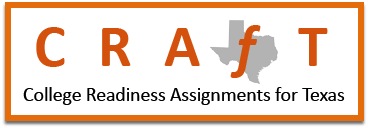A. Earth systems
1. Recognize the Earth’s systems.
a. Describe the characteristics that identify and distinguish the geosphere, atmosphere, hydrosphere, and biosphere.
2. Know the major features of the geosphere and the factors that modify them.
a. Describe the characteristics that identify and distinguish the core, mantle, crust, and tectonic plates, including their locations, compositions, interactions among them, and changes through time.
b. Describe processes of weathering, erosion, deposition, etc., that make up the rock cycle.
c. Describe factors such as earthquakes, volcanoes, and other natural disasters and their impact on the size and location of populations of organisms, and the habitats they occupy.
3. Know the major features of the atmosphere.
a. Describe the physical and chemical characteristics that identify different regions of the atmosphere.
b. Describe the factors that influence weather and climate, including atmospheric circulation, Coriolis Effect, and atmosphere-ocean interactions.
4. Know the major features of the hydrosphere.
a. Describe the composition and location of bodies of salt water and fresh water.
b. Describe patterns of ocean circulation, including currents and upwellings.
5. Be familiar with Earth’s major biomes.
a. Name and describe Earth’s major terrestrial and aquatic biomes, including their locations, the characteristic organisms found in each, and important physical factors (e.g., temperature, rain fall) that produce these distribution patterns.
b. Describe the adaptations of organisms found in each biome.
6. Describe the Earth’s major biogeochemical cycles.
a. Describe the carbon, oxygen-water, sulfur, nitrogen, and phosphorus cycles, including the chemical forms of each element at each stage of the cycle, and the chemical patterns of winds and ocean currents and provide information about changes in these patterns during events such as El Niño/La Niña.
B. Energy
1. Understand energy transformations.
a. Describe patterns of winds and ocean currents and provide information about changes in these patterns during events such as El Niño/La Niña.
b. Describe how energy flows through the Earth’s ecosystems while materials cycle repeatedly within these systems (e.g., food chains and webs, trophic levels, niches, predator-prey interactions, succession).
2. Know the various sources of energy for humans and other biological systems.
a. Describe the major sources of energy, including fossil fuels, geothermal sources, wind energy, solar energy, nuclear energy, and others.
b. Describe methods and practices of energy conservation.
C. Populations
1. Recognize variations in population sizes, including human population and extinction, and describe mechanisms and conditions that produce these variations.
a. Describe and explain carrying capacity, cultural and economic influences, urbanization, distribution, loss of biodiversity, endangered plants and animals, and deforestation.
b. Explain how the demographic structure of a population, birth and death rates, doubling times, and demographic transitions affect or produce changes in population size and composition.
c. Explain how evolution through natural selection can result in changes in biodiversity through the increase or decrease of genetic diversity within a population.
D. Economics and politics
1. Name and describe major environmental policies and legislation.
a. Describe and explain the goals and provisions of the Clean Water Act, the Endangered Species Act, and other major environmental policies and legislation.
2. Understand the types, uses, and regulations of the various natural resources.
a. Name the major U.S. National Parks and Monuments, stating where each is located, and the important features of each that justify protection.
E. Human practices and their impacts
1. Describe the different uses for land (land management).
a. Describe features of landscape and geology that lead different locations to be used for different purposes (e.g., agriculture, mining, recreation, urban settlement).
2. Understand the use and consequences of pest management.
a. Describe major types of pesticides and herbicides, and other methods of controlling pests (e.g., biocontrol, genetically-modified organisms).
3. Know the different methods used to increase food production.
a. Describe the features that identify and distinguish intensive agriculture, sustainable agriculture, organic agriculture, and other food and fiber production methods, including genetically-modified organisms and livestock practices.
4. Understand land and water usage and management practices.
a. Describe forestry practices (e.g., tree plantations, fire management).
b. Describe rangeland management practices (e.g., grazing practices, conversion to grasslands, federal regulation).
c. Describe management of urban land development, transportation infrastructure, public lands, and land conservation options.
d. Describe regulation and management of mining practices.
e. Describe regulation and management of fishing practices.
5. Understand how human practices affect air, water, and soil quality.
a. Describe the formation and effects of acid deposition, ozone depletion, greenhouse effect, and global warming.
b. Describe different methods of managing waste.
c. Describe the essential components and features of recycling, reuse, remediation, renew, landfills, wastewater, and water recycling.


 Show Printable Version
Show Printable Version




